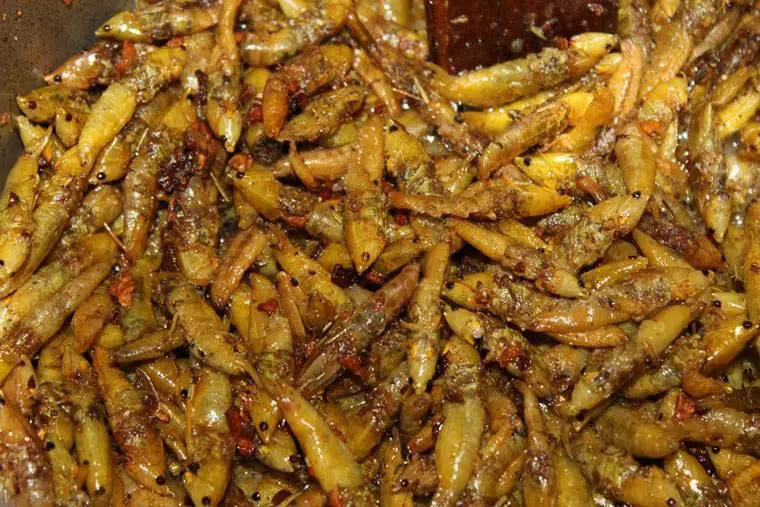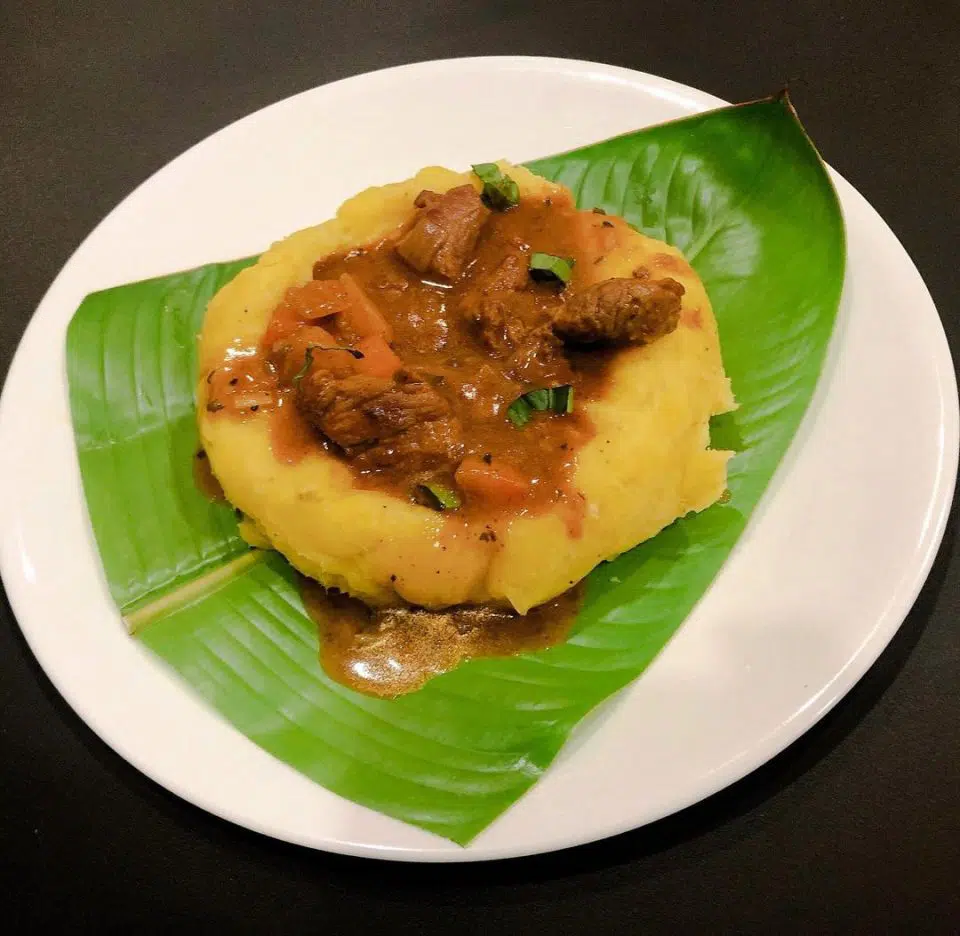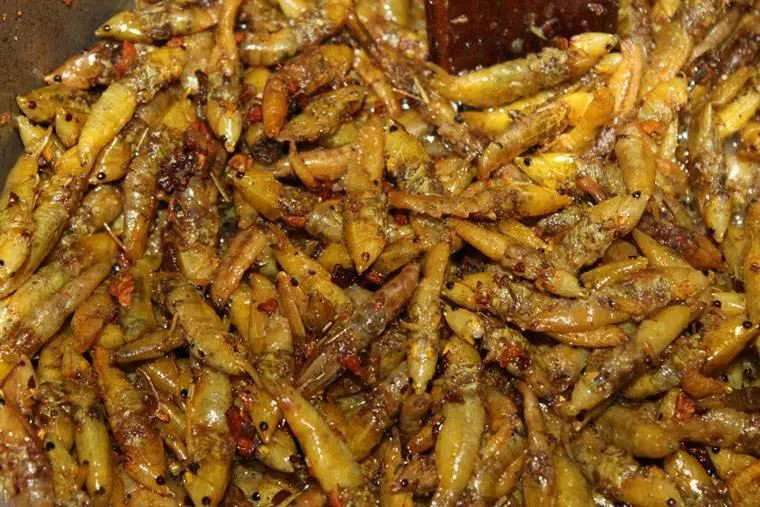Ugandan Food : Top 20 Delicacies to Try Out

Ugandan food is our focus today. Uganda, a land of breathtaking landscapes and vibrant cultures, is not only celebrated for its natural beauty but also for its diverse and delicious cuisine. The country’s culinary landscape is a captivating journey through flavors and traditions influenced by various regions and ethnic groups. In this article, we’ll take you on a gastronomic adventure to explore the top 20 Ugandan foods that are sure to tantalize your taste buds.
In addition to traditional local foods, Uganda has embraced a vast array of international cuisines, including Indian, Chinese, French, and Italian. Therefore Ugandan restaurants are now offering both local and international dishes. A few of the best restaurants serving international cuisine in Kampala, Uganda’s capital city, are the Fang Fang, the Mediterráneo, the Cantine Divino, the Cabana, and the Great Indian Dhaba.
Your Morning Switch-up
1. The Heavenly Ugandan Tea (Chayi)

Accompany your breakfast snack with the Ugandan heavenly tea that is a combination of water or milk boiled with ginger (Tangawizi), holy basil leaves (Omujaaja), cinnamon leaves (Mdalasini), or bark and lemongrass (Kisubi).
These are sometimes processed powders, or you can pluck these leaves and bark from a nearby bush. The sweet aroma always fills the air as it boils, and the medicinal value in this tea combo is good for your health. It would be a substantial loss to leave Uganda without trying this heavenly tea.
2. The Famous Rolex (Rolled Eggs)

Certainly, this isn’t referring to an expensive watch brand. In Uganda, a “Rolex” is a tasty meal you can have any time you’re hungry. It is made of fried eggs covered in chapati (flat bread). You may also add onions, tomatoes, green pepper, and cabbage to the eggs.
This meal is really tasty, so lots of Ugandans have a favorite person they like to get their Rolex from – a trusted “Rolex guy.” This choice often comes with a strong sense of loyalty because of how that person prepared their Rolex.
You can eat the vegetable combination cooked or fresh, and you can order a ‘Rolex pizza’ upon request. Here, they dice onions, tomatoes, cabbage, chapati, and maybe even green pepper, then combine them with eggs and fry them on a plate. You can buy a Rolex at almost every roadside countrywide for as little as UGX 1500/=0.4 USD. Yes, you can only find such pocket-friendly dishes in Uganda.
Fun Fact: There are a few Rolex festivals every year, which are fantastic weekend events in Kampala. Look at the Uganda Rolex Festival’s official Facebook page here, where the photos speak volumes about the event.
3. Katogo Dishes

Kagoto is a traditional breakfast dish in Uganda that will start your day off in great spirits. Katogo means a mixture when you translate it. It’s a blend of different things that people eat all across Uganda. It’s like a mix of ingredients served together in one dish. The key components of the dish are matooke (peeled green bananas) and a sauce (beef, groundnuts, offal, and beans or cow ghee).
Initially, Katogo was a mixture of diced cassava and beans. Katogo is a dish that emerged in Buganda and Western Uganda, where it was originally regarded as a poor man’s meal. Later, the trend changed when the Baganda came up with an improved Katogo dish version—a combination of offals and matooke. The wealthy elite introduced matooke to substitute cassava, and later, variations of Katogo used matooke and other fresh sauces.
Katogo’s influence rapidly spread across Uganda, and the dish has many variants to this day. This popular delicacy is a breakfast dish mainly among Bantu-speaking societies, most metropolitan Ugandans, restaurants, and hotels. You can eat it with salad greens or avocado. The blend of these different foods mixed together creates a beautifully tasty outcome that keeps you satisfied until the late afternoon.
4. Fried Chapati

Corn tortillas are traditional in Mexico. Tacos are common in the United States. Every community on the planet has one bread staple that they consume with everything. Chapati is a popular side dish and bread staple in Uganda, notably in restaurants. This bread is usually sliced into triangular shapes and served as a side dish for the main course.
Chapatis are prepared by mixing wheat flour, baking powder, onions, green pepper, carrots, salt, and water, and the mixture is then flattened and fried in limited amounts of oil. Chapatis, once fried, can be used for a variety of purposes. You may eat them with beans or gravy. You may also use them to wrap minced beef, boiled eggs, and vegetables. A chapati may also be consumed separately from the main course as an accompaniment to your morning or evening tea.
5. Ugandan Rice Balls/Rolls (Namungodi)

Ugandan rice balls (Namungodi) are a deep-fried breakfast snack common among Uganda’s poor and school-age children, but it’s also great for parties. This is a combination of boiled rice, mashed potatoes (which makes the boiled rice stick together), and flour dipped in whisked eggs and other ingredients to add flavor. It is then deep-fried until golden brown to give it that crispy texture.
6. Ugandan Egg Rolls

A Ugandan egg roll isn’t anything like a traditional Chinese egg roll. An egg roll in Uganda comprises a hard-boiled egg wrapped inside a ball of mixed, mashed potatoes with a few vegetables, dipped in whisked eggs, and given a golden fry. You can eat this tasty snack for breakfast, lunch or have it as a side dish. It is sold in almost all hotels and restaurants countrywide.
Lunch: Food and Sauce:
7. Matooke (Steamed Mashed Bananas)

Matooke (matoke) is a popular Ugandan dish and a staple meal for most Bantu tribes. While in Uganda, you can find miles and miles of lush plantain fields in Western and Central Uganda (Masaka).
Matooke is grown from such farms and sent to city dwellers. Plantains are sometimes peeled and steamed, then mashed and served with a sauce of your choice. Matooke can be fried with tomatoes and onions. Ugandans love steaming the green, unripe ones while still unpeeled (Empogola) and lavish on them in the evenings or for lunch with bacon, muchomo (grilled or barbecued meat), or some grilled beef or goat meat.
8. Chicken-Nut Sauce

Chicken-Nut is an uncommon Ugandan dish that you surely have to taste if you want a heartfelt and pleasant meal. It is commonly found in high-class restaurants since it is a bit expensive for the common people to enjoy.
This recipe is made by frying onions, chicken stock, pieces of chicken, spices, and peanut buttercream in a stew pot. After preparation, chicken-nut is generally eaten with rice, posho (Ugali), or matooke, which gives you a feeling of life satisfaction.
The Luwombo Stew:
This popular Ugandan stew includes chicken, beef, and fish steamed in wrapped plantain leaves with vegetables such as carrots, potatoes, mushrooms, and peanut (g-nut) sauce. All Luwombo stews are covered in smooth, warmed banana leaves and steamed. Luwombo is a sweet, nutritious food that tastes great and gives you a warm feeling.
9. Royal Chicken Luwombo

This is a royal dish that was created in the late nineteenth century for the Buganda Kingdom’s royal family. The Luwombo, one of Uganda’s best dishes, was introduced by Kabaka (King) Mwanga’s chef. Bravo to the chef for creating such a wonderful dish that has brought pleasure and happiness to future generations.
It is now served on traditional Ugandan weddings, and without it, there is no wedding. Chicken Luwombo is usually eaten with matooke, rice, cassava, sweet potatoes, or chapati.
10. Beef Luwombo

Like the chicken Luwombo, this dish is also steamed in soft, warmed banana leaves. Ingredients include onions, tomatoes, green pepper, carrots, garlic, beef, and optional Irish potatoes. You can add spices for flavor and taste, and it is served with matooke, rice, cassava, sweet potatoes, or chapati.
G-nut Sauce Luwombo

When you’re in Uganda, you might come across something called G-nut sauce. It’s like a special paste that adds a wonderful taste to lots of Ugandan foods. This sauce makes the dishes really delicious and full of flavor. The G-nut paste is a thick creamy sauce of sweet red peanuts, and it complements dishes like roasted fish or is eaten with dishes such as steamed sweet potatoes and matoke (boiled or steamed mashed bananas).
11. The Beef G-nuts Luwombo
This isn’t like peanut butter. The g-nut paste is made by grinding the seeds with their red skin on to form a flour-like texture, and it is often ground until it contains oil. The beef is occasionally roasted first and then fried with different vegetables before being added to the g-nut paste to give it a delightful scent. This g-nut sauce is poured onto banana leaves, combined with the fried beef, and steamed to make a beef g-nut Luwombo.
12. The Mushroom G-nuts Luwombo

This is made in a similar way, with one small change: the G-nut paste is mixed with mushrooms and then wrapped in banana leaves and steamed. This creates a dish called mushroom G-nut Luwombo, which is really tasty and special.
13. The Fish G-nuts Luwombo
Many people love this stew and consider it to be their favorite. The G-nut paste is prepared in the same way as all the other Luwombos, except for the fish preparation. Before being added to the G-nut mixture, the fish is smoked until it no longer smells fishy. Remove the bones before combining the fish with the G-nut paste and steaming in banana leaves.
Evening Bites:
14. Muchomo (Roasted Meat)

This is what meat lovers would refer to as “paradise” on Earth. Nyama chomo comes from the Swahili word for “roasted meat.” Muchomo in Uganda has become a tradition found in top-quality restaurants and roadside in all cities.
It is eaten with steamed, unpeeled bananas, fresh salads, or chips (fries), and it is very crispy and delicious. Muchomo involves a variety of meats spanning from chicken to pork, goat, and sometimes beef. This dish is perfect as a treat on diet cheat weekends.
15. TV Chicken

This is a delectable Ugandan dish that is popular among university students and the youth of today. TV chicken gets its name from being cooked in a rotisserie oven that looks like a television. The scrumptious TV chicken is on sale at roadside food stalls and is frequently eaten with salads, smoked bananas, and French fries.
16. Kikalayi (Fried Pork)

You haven’t tasted pork until you’ve had ‘Kikalayi.’ The name refers to large and durable locally crafted frying pans used for cooking. Kikalayi is best when enjoyed with mates, which is why it is presented grandly on a large round tray (with optional red chili). If you like pork, Kikalayi is something you can try.
17. Roasted Pork Ribs

The tasty pork ribs, barbecued on a stick and sold at roadside bars, markets, and restaurants, are sometimes served with roasted sweet plantain (known as gonja), unpeeled matooke, kachumbari (a fresh East African salad or salsa that’s often served as a side dish or condiment), with avocado and cassava.
Seasonal Delicacies:
18. Fried Grasshoppers (Ensenene)

Why not sample one of Uganda’s exclusive delicacies? Nsenene is a traditional fried grasshopper dish marketed in bars and roadside restaurants.
This famous snack is only available during the rainy season, mostly in November and April. The insects’ wings and legs are removed and the grasshoppers are cooked in the natural oils of grasshoppers. Some marketplaces and roadway vendors sell grasshoppers in plastic containers, which you can purchase and fry yourself. In pubs, they may serve you this treat with any beverage of your choice.
As you fry it at home, you may add small slices of carrots and green pepper and cook it all up. When the grasshoppers are ready, you may add small diced raw onion pieces. The aroma is breathtaking, and the taste of this snack will make your evening heavenly.
19. Roasted Maize/ Corn (Kassoli)

This is a snack for all times. This is fresh corn straight from the garden slowly roasted over a medium fire until all sides turn to a brownish color. If you pluck this fresh soft corn from the garden and don’t cook it immediately, it loses its sweetness.
If you see someone in Uganda roasting corn next to a maize garden, then that corn is deliciously fresh and tasty. Since fresh corn is used, roasted corn is seasonal, and you might not find it all year round.
20. Roasted/ Deep Fried/ Steamed Plantain (Gonja)

Bananas of all colors have undoubtedly surrounded you if you live in Uganda or any other tropical region: green, red, and yellow (they turn yellow when ripe). Gonja or plantain has been used in about a million recipes. If you want steamed plantain, you can use not-very-ripe gonja.
Go the extra mile and wrap it in banana leaves for that aroma. Steam it, and it will come out yellow, or like a red sausage if steamed for longer. Gonja can be seen on the streets of Kampala during some seasons and show up more at barbecues. You can roast them in your home, but if you don’t have the patience for that, buy them from street vendors for a few Ugandan shillings.
In Conclusion:
Ugandan cuisine is a celebration of diversity, where flavors, ingredients, and traditions come together to create a culinary experience like no other. Whether you’re indulging in the simplicity of kikomando or savoring the exquisite flavors of Luwombo, Uganda’s top 20 foods offer a journey through culture and taste that is truly unforgettable. Don’t miss the opportunity to explore these delightful dishes and embrace the vibrant flavors of the “Pearl of Africa.”













